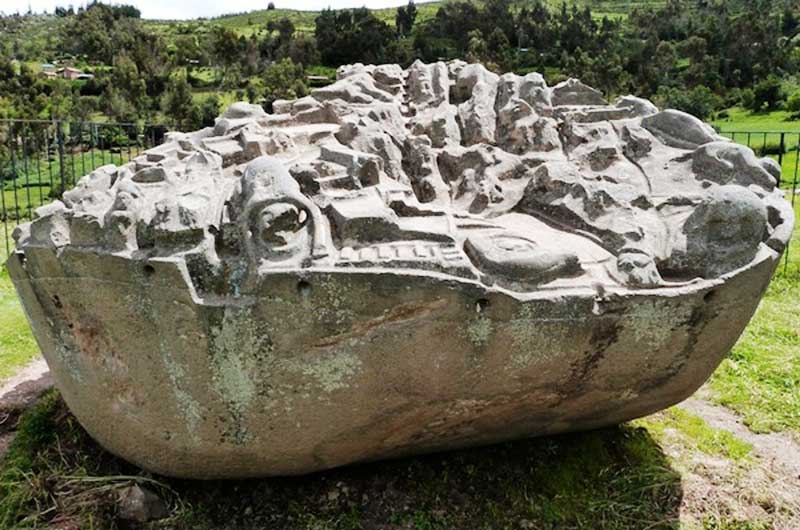
The pre-Columbian archaeological site of Sayhuite, located on the top of a hill called Concacha in Abancay, a province in the southern-central Peruvian region of Apurímac, is regarded as a centre of religious worship for the Inca people, focusing on water. The Inca Empire flourished between the 15th and 16th centuries AD and the name ‘Sayhuite’ is said to have its origins in the Quechua word ‘Saywayta’, which translates as ‘place of orientation’. It is believed by some scholars that it was once home to an enclosed sanctuary and this particular site was one of the four sanctuary oracles of Apurimac, known also as the ‘sons’ of Pachacamac. In those ancient days, the tall columns of the Sayhuite temple were draped in fabrics with gold bands. During that time, the temple was under the care of the priestess Asarpay, who jumped to her death in the nearby 400 meter gorge to avoid capture by the invading Spanish forces. However, at present, there is no archaeological evidence to establish the veracity of this claim. Today all that remains of the ancient sanctuary is its raised platform, on which lies the gigantic monolith of Sayhuite.


The curious Sayhuite monolith, an enormous rock, is definitely the most important monument found at the ancient Sayhuite site. The surface of the four meters wide and two meters long huge rock is carved with more than 200 figures of geometric and zoomorphic figures, such as reptiles, frogs and felines and all those creatures are surrounded with terraces, ponds, river, tunnels and irrigation canals. Though the exact purpose and the meaning behind these features is still shrouded in mystery, it is assumed that, as the gigantic rock was sculpted into the likeness of a topographical hydraulic model, complete with ponds, rivers, tunnels and irrigation channels, the monolith is a depiction of the irrigation system, which prevailed in those days of the Inca people.

Till today, nobody is really aware about the actual reason behind the creation of the strange Sayhuite monolith. However, the archaeologists believe that the Sayhuite site was a religious centre for the Incan people. In all probability, those ancient people used to perform rituals and ceremonies for the general worship of water at that site.

Nevertheless, the archaeological site of the Sayhuite monolith has today become a popular tourist attraction and the abnormally large size and intricate carvings of the Sayhuite monolith is definitely responsible for that.